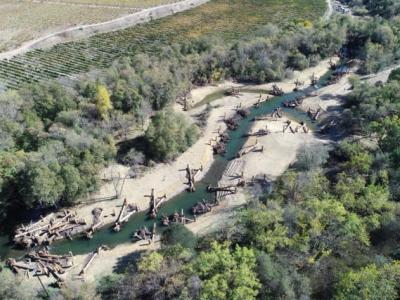PIT Antenna Technology: An Array of Applications in the Russian River Watershed
Tour Coordinators:
Will Boucher, California Sea Grant
Gregg Horton, Sonoma County Water Agency
Passive integrated transponder (PIT) antennas have become important tools for informing salmonid habitat and demographic questions. We will provide an overview of advancements in PIT technology that have expanded our capabilities for answering questions that up until now could not readily be addressed with traditional monitoring methods. We will show examples of how we are using PIT antennas for life cycle monitoring, movement, survival, habitat validation, habitat connectivity, and growth in a variety of habitats: Russian River estuary and mainstem, Dry Creek, Green Valley Creek and Porter Creek. Matching PIT antenna and reader configurations to monitoring objectives are important considerations in developing a sound monitoring plan. By strategically siting antenna locations to complement other more traditional sampling approaches, we have developed a robust monitoring program that is less vulnerable to data inconsistencies arising from environmental extremes. At the same time, we can drill-down on critical habitat issues that are impeding population recovery.

